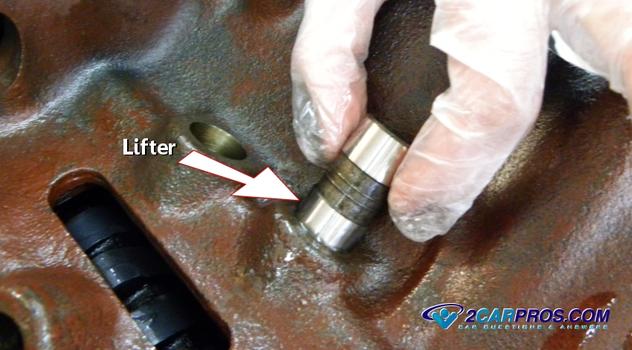How A Camshaft Lifter Tappet Follower Works?
Camshaft Lifter Tappet Follower
Working of camshaft lifter
Helpful Information
A cylindrical rod is situated in the cylinder block or cylinder head which has oblong lobes or cams which push the intake and exhaust valves. This force is applied on the valve directly or through an intermediate mechanism such as a rocker arm, lifter (cam follower) and push rods are used to press against the valve for movement. Camshaft to crankshaft correlation timing is adjusted by the camshaft actuator.
There are two kinds of camshaft, lifter-tappet, follower configurations used in the automotive industry: IBC (In Block Camshaft) and OHC (Overhead Cam). IBC has been used since the early years of the automotive industry. This type of configuration uses a centrally located camshaft (in block) with lifters and pushrods that open and close the valves in the cylinder head(s).
Lifters follow the camshaft lobes which dictate how far the valves open (lift), and how long they stay open (duration). Lifters come in different configurations such as; solid, hydraulic, roller, mushroom, all of which work on the same principle.
Solid lifters have no hydraulic adjustment and rely on the valve lash (air gap) to be manually set at the stem of the valve where it contacts the rocker arm. Solid lifters are used mostly in racing applications where higher engine rpm and long duration can damage normal hydraulic lifters.
Roller lifters are exactly as the name implies, they are designed with a roller wheel and needle bearings that ride along the camshaft. These lifters reduce drag caused by friction and are found in most production vehicles.
Common Problems
When a lifter fails it can cause an engine misfire and cause abnormal noises, this unusually occurs when the valve inside the lifter is leaking and fails to hold oil pressure.
This article we will explain camshaft, lifter, tappet and follower configurations present in the automotive industry.
Overhead Camshaft Configuration
Step 1 - A lifter is located either in the engine block or cylinder head, and is controlled by oil pressure supplied by the oil pump. This overhead camshaft configuration uses a lifter and a roller follower to push against the valve spring to open the valve, either intake or exhaust.

Overhead Camshaft Lifter Follower (Cutaway Cylinder Head)
Step 2 - The lifter provides the automatic adjustment (In older engines, valve lash must be adjusted by hand) which is supplied by oil pressure. When the lifter is forced away from the camshaft by rotation, the oil valve inside the lifter is closed which traps the oil inside the lifter while opening the valve. The follower then transmits the force to the valve stem.

Camshaft Follower
Step 3 - Although this follower is designed with a roller, some simply ride against the camshaft without a roller.
 Step 4 - As in all hydraulic lifter configurations, engine oil pressure is used to lubricate and pressurize the lifter plunger.
Step 4 - As in all hydraulic lifter configurations, engine oil pressure is used to lubricate and pressurize the lifter plunger.

Lifter Oil Passage (Cutaway)
Camshaft In Block
Step 5 - The alternative design to overhead valve train construction is the in block camshaft, (IBC) this design is traditionally an older design and less efficient than its counterpart due to the added weight of the additional components such as a pushrod and full rocker arm which required a heavier valve spring.

Camshaft In Block (Bottom)

Overhead Camshaft Lifter Follower (Cutaway Cylinder Head)

Camshaft Follower
Step 3 - Although this follower is designed with a roller, some simply ride against the camshaft without a roller.


Lifter Oil Passage (Cutaway)

Camshaft In Block (Bottom)

Comments
Post a Comment